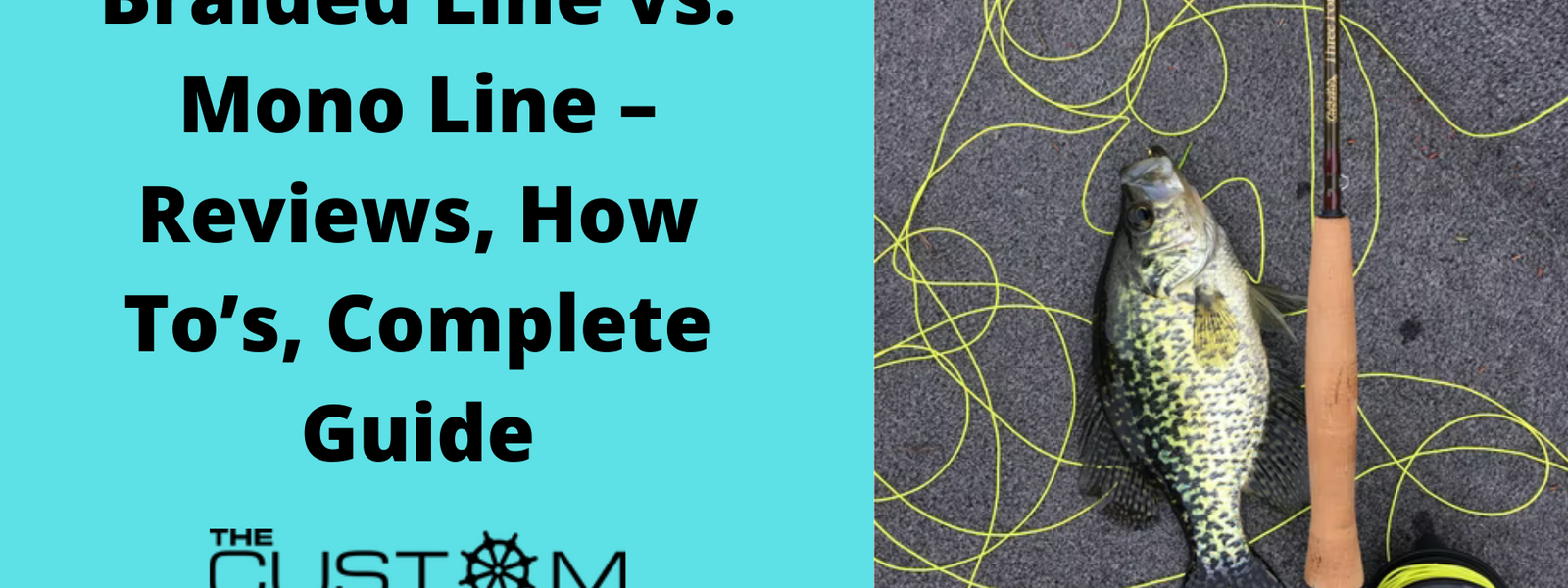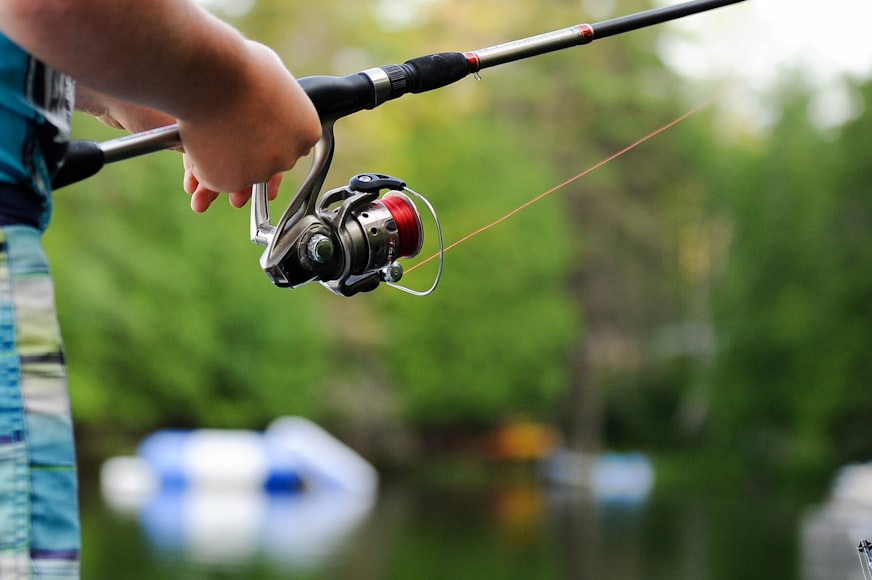If you’re new to angling, getting used to a fisherman’s lingo takes a bit of time. While there isn’t a set formula for determining the best fishing line, our angling experts have a few tips to offer both newbies and fishing pros. Our complete guide on braided vs. monofilament fishing lines will ensure that you’re ready to spool your reel with a high-quality line that best suits your angling aspirations.
Braided vs. Monofilament Fishing Line: The Basics
Monofilament Fishing Line
Most of us can identify our “eating pants”: you know, the ones you wear on Thanksgiving. Monofilament fishing lines play a similar role on the fishing boat: because they’re threaded from a single synthetic plastic fiber, often nylon, they’re extra stretchy and offer lots of slack - just like our comfy pants. This slack is especially helpful for catching big game fish during an offshore fishing trip. Whether you’re in a fishing tournament or going rogue on a big-game trolling trip, mono lines can typically withstand the tension of a heavy fish without breaking.
The plasticky appearance of mono lines also makes them less visible in the water, ultimately enhancing the appeal of your bait. Note that mono fishing line diameters are larger than those of braided fishing lines (which we’ll cover next!); that said, anglers typically aim for the smallest possible diameter when looking for the best mono fishing line. Smaller monofilament diameters allow anglers to cast further and get more line on the reel while increasing sink time and the overall likelihood of luring your catch. Most brands offer a range of mono line diameters and colors that anglers can choose based on the expected weather and environment of their next fishing trip.
Like most things in life, there are always a few cons. While mono lines are inexpensive compared to braided lines, their cheap plastic construction makes them less durable than braided fishing lines and more prone to abrasion. They also absorb water, which weakens their ability to withstand tension without breaking. In light of these disadvantages, monofilament fishing line is extremely versatile and ideal for amateur anglers. When it comes to learning the ropes of knot tying, the smooth texture of monofilaments makes them easier for practicing basic fishing knots.
Best Mono Fishing Line
The best mono fishing lines feature low visibility, high pliability, and low “line memory,” meaning that the mono line is less likely to get tangled. Fishing line brands known for these features include Maxima Ultragreen, whose superior knot strength covers a range of water conditions and fish species from salmon to tarpon. Other angler-endorsed mono line brands include KastKing, whose creators aim to keep “fishing fun” by keeping it affordable. The Berkley Trilene mono line brand presents a slight learning curve due to its thin, discrete design, so while this mono line is better suited for experienced anglers, it’s significantly more abrasion-resistant than other mono fishing lines - and still cheap!
Braided Lines
True to their name, braided fishing lines are braided from multiple synthetic fibers: often a mix of Dacron, Micro-Dyneema, or Spectron. The dense, woven construction of braided fishing lines makes them thinner and more taut than monofilament fishing lines. While the abrasion-resistant structure of braided lines increases their cost, it also increases their lifespan on the water before a replacement is due. Due to their smaller diameters, braided lines increase casting distance and tend to hook a fish more efficiently than mono lines. Braided fishing lines are often used in redfish tournaments and deep-sea fishing due to their taut, thin design, which enables them to quickly cut through deep water.
Now for the downsides: generally speaking, both mono and braided fishing lines function beautifully in their respective spheres. However, the robust design of braided lines ultimately makes them far less stretchy, more visible underwater, and more prone to break under the force of a heavy fish. If you’ve registered for a catch-and-release fishing tournament, take note: braided lines are tougher to remove from a hook wound than fishing lines, increasing the risk of injuring your catch. Although the tension of braided lines gives experienced anglers a better idea of the pull and strength of their catch, this same feature increases the chance of tearing the line, should the angler choose to reel in a large catch with a braided line.
Best Braided Fishing Line
The best braided fishing line is the one that suits your angling plans and target fish species. That said, a few brands are especially popular among fishing experts. If affordability is a key factor for you, Spiderwire Stealth offers a durable yet inexpensive braided line constructed from Teflon-treated microfibers, which hold their color and maximize casting distance and sensitivity. Sufix 832 is another highly recommended braided line brand: its smooth build, small diameter, and strong construction promises years of consistently far casts and excellent line sensitivity.
How to Tie Braided Fishing Line
Braided lines are trickier to tie, but learning how to tie a braided fishing line will reward you with ultra-strong knots. The best knot for a braided line depends on whether it’s connected to a leader, lure, or hook. Some of the most common braided line knots include the Double Uni-Knot and the Blood Knot for connecting the braided line to a leader. Palomar Knots and Non-Slip Loops are popular options for terminal knots that connect the fishing line to a lure or hook. Anglers can also double the Palomar Knot for added strength.If you’re looking for a versatile knot to use for all of your fishing lines, anglers recommend the San Diego Jam Knot, which originated among tuna anglers in San Diego who devised an extra robust knot for heavy jigs. Check out this handy video to practice and perfect your braided line knots.
How to Tie Braided Line to Mono
If you’re tying a braided line to mono, you understand the importance of using a leader with your braided line. A monofilament leader is a game-changer by reducing the visibility of your bait while maximizing the strength, sensitivity, and casting distance of your braided line. You can tie braided line to mono by using the aforementioned Double Uni-Knot or Blood Knot. The Double Uni-Knot is especially popular among anglers due to its simplicity and easy-to-teach nature. If you need another visual reminder, this video overview quickly and clearly demonstrates how to tie braided line to a leader.
Braided Line vs. Mono Fishing Line Recap: How To Choose?
If you’re still on the fence about the best fishing line for you, keep this recap in your back pocket to make the best choice for your fishing goals.
Choose Monofilament Fishing Line If:
- You need a stretchier and more elastic fishing line to accommodate big game fish and fishing environments with weeds, corals, rocks, or other tight spaces where braided fishing lines are likely to break
- You’re an amateur angler and need practice tying fishing knots with a smoother & more malleable fishing line
- You’re looking for a cheaper fishing line - and you’re prepared to replace your microfilament lines relatively frequently!
Choose Braided Fishing Line If:
- You need an outstandingly strong fishing knot
- You’re planning for an inshore saltwater outing, a freshwater fishing trip, or any other situation where casting distance and the ability to cut through deep water are priorities
- You’re an experienced angler who can make responsible fishing decisions based on the tension in your fishing line
We’ve covered a lot of ground - or water, if you will - in the realm of fishing lines. While finding the best fishing line for your needs takes time and on-the-water practice, these angler-endorsed tips will help you identify the best fishing line for you.






